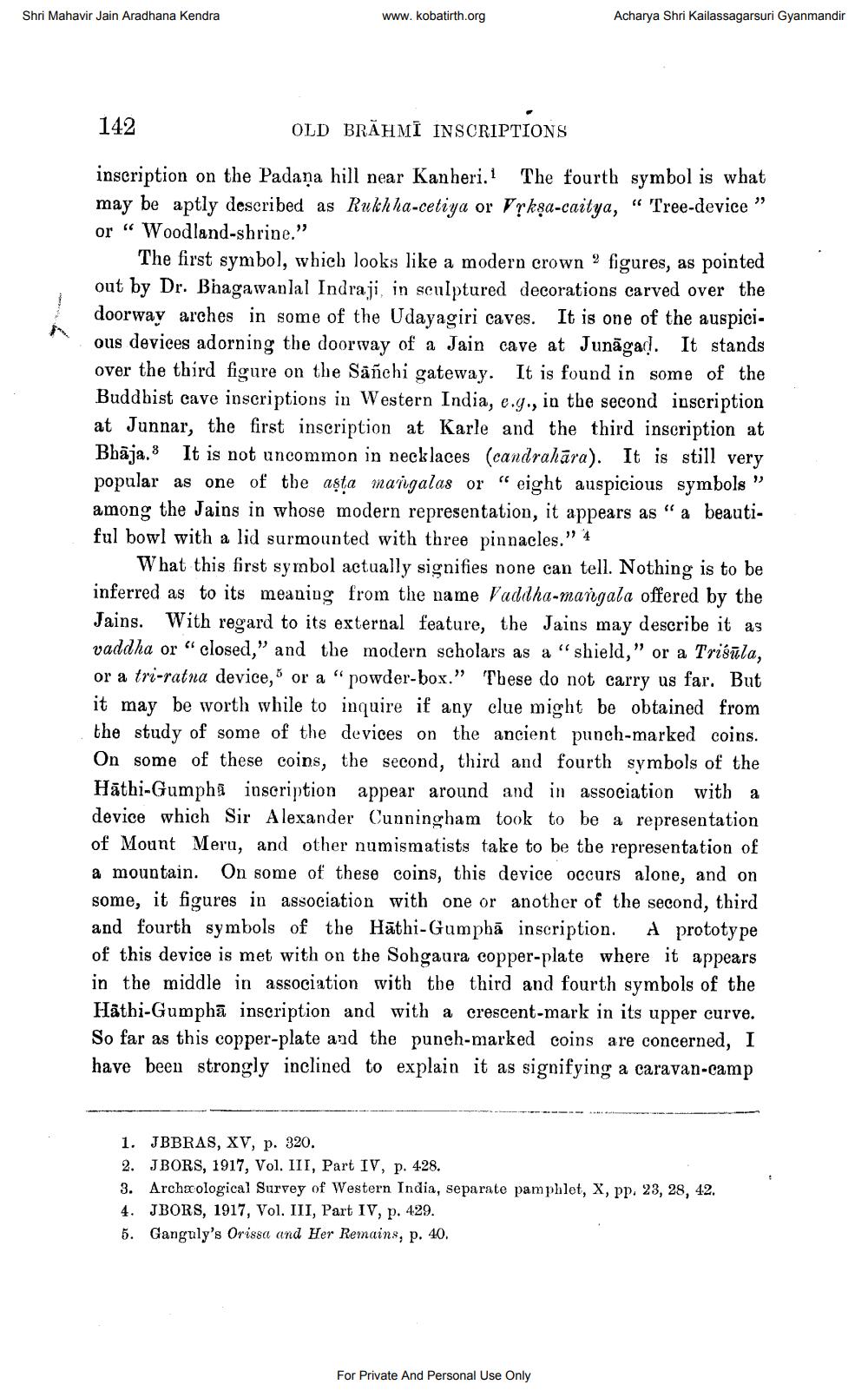________________
Shri Mahavir Jain Aradhana Kendra
www.kobatirth.org
Acharya Shri Kailassagarsuri Gyanmandir
142
OLD BRAHMI INSCRIPTIONS
inscription on the Padaņa hill near Kanheri.! The fourth symbol is what may be aptly described as Rukh ha-cetiya or Vşkşa-caitya, “ Tree-device" or “ Woodland-shrine."
The first symbol, which looks like a modern crown ? figures, as pointed out by Dr. Bhagawanlal Indraji, in sculptured decorations carved over the doorway arches in some of the Udayagiri caves. It is one of the auspici. ous devices adorning the doorway of a Jain cave at Junagad. It stands over the third figure on the Sanchi gateway. It is found in some of the Buddhist cave inscriptions in Western India, e.g., in the second inscription at Junnar, the first inscription at Karle and the third inscription at Bhaja. It is not uncommon in necklaces (candrahāra). It is still very popular as one of the aşta mangalas or “ eight auspicious symbols " among the Jains in whose modern representation, it appears as "a beautiful bowl with a lid surmounted with three pinnacles." 4
What this first symbol actually signifies none can tell. Nothing is to be inferred as to its meaning from the name Vadiha-mangala offered by the Jains. With regard to its external feature, the Jains may describe it as vaddha or "closed," and the modern scholars as a "shield," or a Trisula, or a tri-ratna device, or a "powder-box." These do not carry us far. But it may be worth while to inquire if any clue might be obtained from the study of some of the devices on the ancient punch-marked coins. On some of these coins, the second, third and fourth symbols of the Hāthi-Gumphi inscription appear around and in association with a device which Sir Alexander Cunningham took to be a representation of Mount Meru, and other numismatists take to be the representation of a mountain. On some of these coins, this device occurs alone, and on some, it figures in association with one or another of the second, third and fourth symbols of the Hāthi-Gumphā inscription. A prototype of this device is met with on the Sohgaura copper-plate where it appears in the middle in association with the third and fourth symbols of the Hathi-Gumphā inscription and with a crescent-mark in its upper curve. So far as this copper-plate and the punch-marked coins are concerned, I have been strongly inclined to explain it as signifying a caravan-camp
1. JBBRAS, XV, p. 320. 2. JBORS, 1917, Vol. III, Part IV, p. 428. 3. Archäological Survey of Western India, separate pamphlet, x, pp. 23, 28, 42. 4. JBORS, 1917, Vol. III, Part IV, p. 429. 5. Ganguly's Orissa and Her Remains, p. 40.
For Private And Personal Use Only




